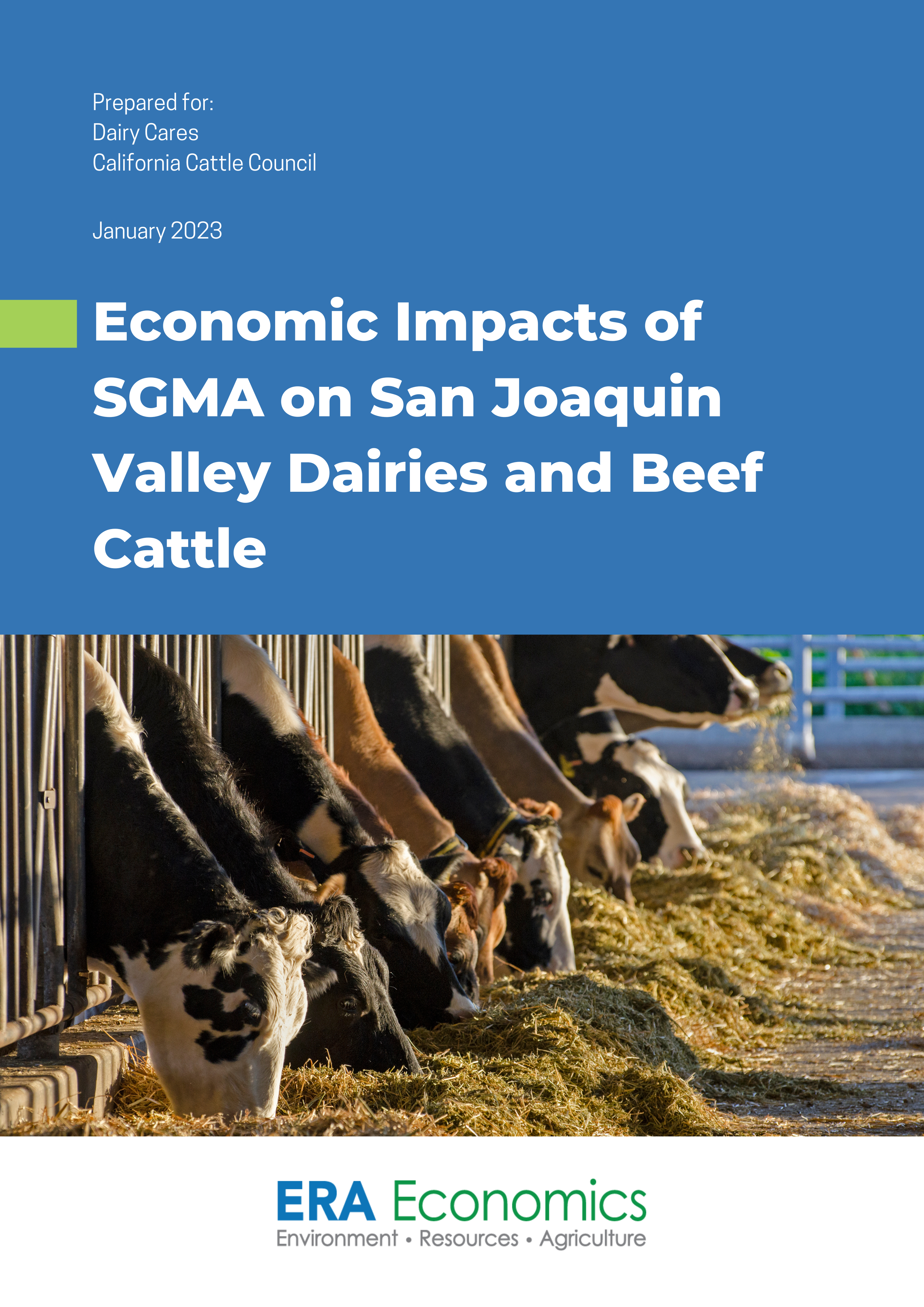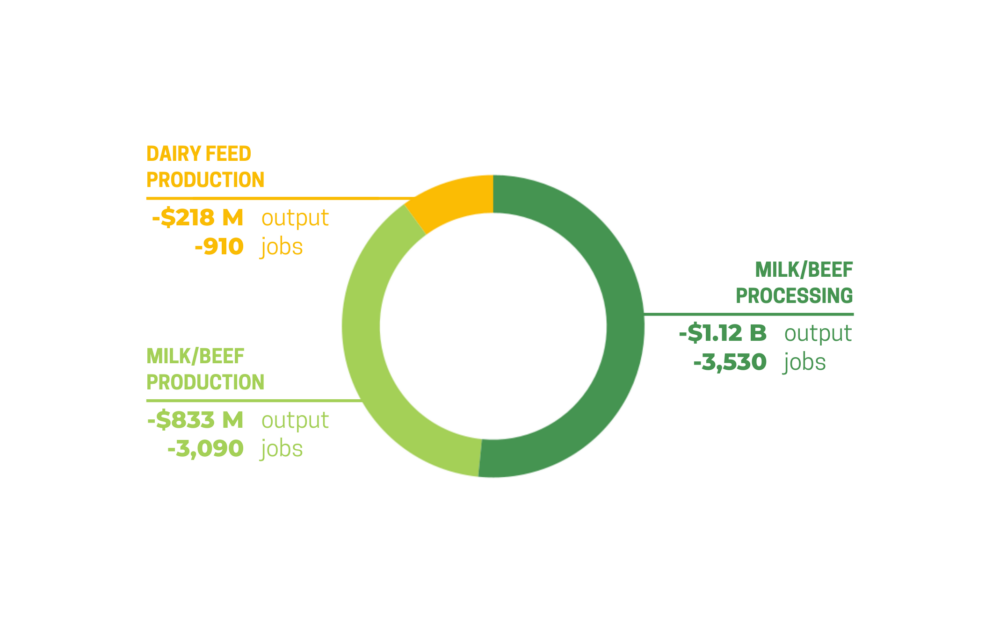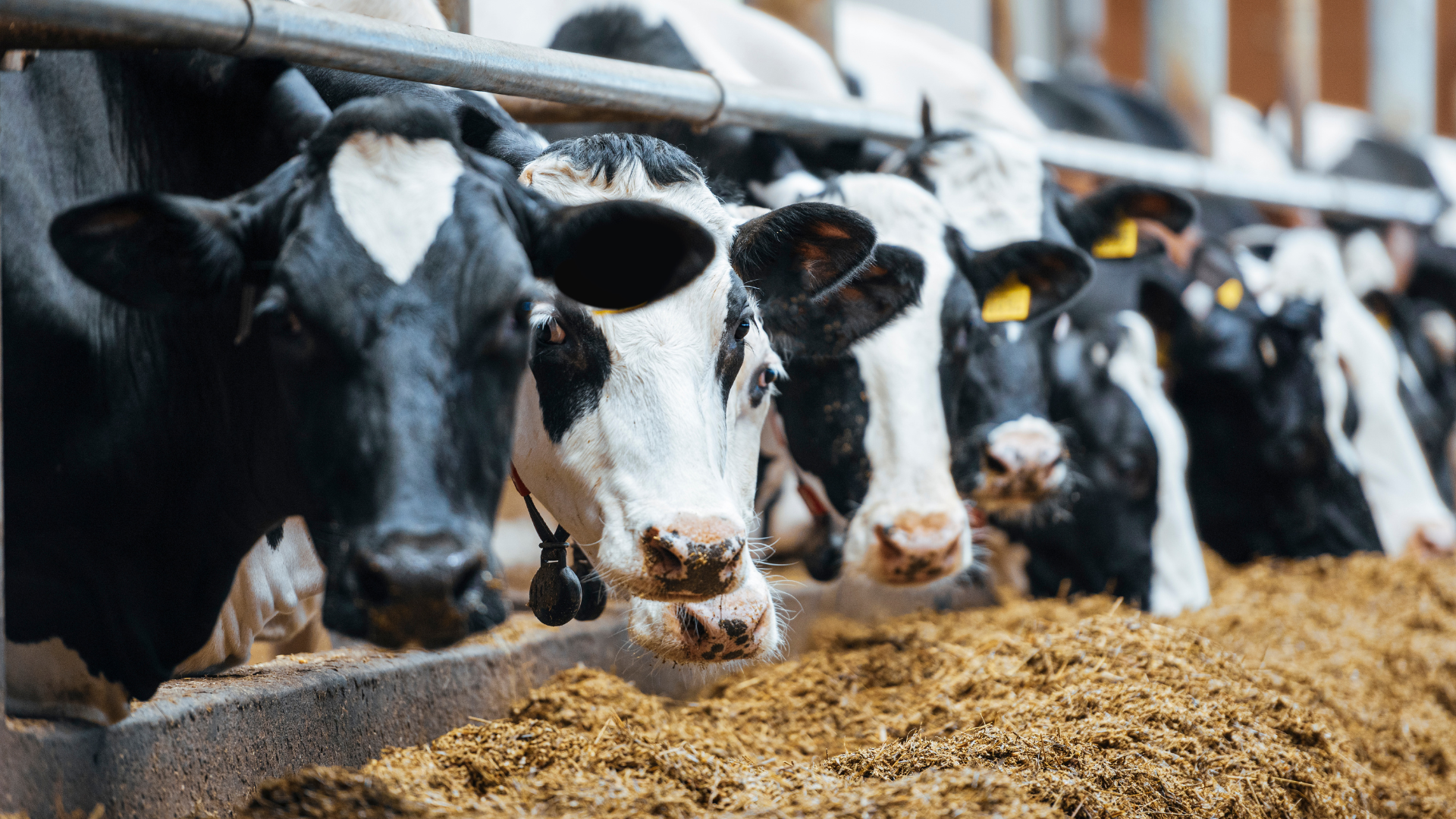Dairy Cares and the California Cattle Council commissioned ERA Economics to prepare an assessment of the economic impact of SGMA on dairies and beef cattle in the San Joaquin Valley. SGMA implementation is continuing across California. Sustainably managing water resources provides long-run benefits for our agricultural industries, but these come with more immediate adjustment costs. Our team at ERA Economics has been working with our agricultural industries to develop data and tools to understand SGMA implementation, how it will affect the industry, and help businesses proactively plan to minimize economic costs.
The most substantial adjustments to SGMA are expected in Critically Overdrafted Subbasins, many of which are in the San Joaquin Valley. GSAs in the San Joaquin Valley are working to implement projects and management actions to meet SGMA requirements. These projects and management actions affect water users in different parts of the state through higher water costs and reduced water supply. The effects of SGMA are highly local.
One of the key industries that will be affected through SGMA implementation is California’s $29 billion dairy and beef cattle industry. California produces around one-fifth of the US milk supply, and the dairy sector employs over 103k people. This provides income and a tax base, primarily in rural areas of the state.
The study utilized geospatial crop data, GSA water balances, planned projects, and market information on dairy and feed production to calibrate an economic model of San Joaquin Valley crop and dairy production. We applied this framework to quantify the impacts of SGMA across the dairy supply chain through feed production to herd size, milk production, and processed milk products. Changes in the cost and availability of water affect feed production which limits herd sizes, ultimately impacting total milk production and local retail prices for dairy goods.

“Economic Impacts of SGMA on San Joaquin Valley Dairies and Beef Cattle” was commissioned by Dairy Cares and the California Cattle Council.
Click here to download the Executive Summary.
The estimated impact of SGMA on the dairy cattle and beef sectors is a reduction $2.2 billion of gross output, or about 7% over current conditions, and 7,530 jobs. Total dairy herd size is estimated to fall by 130k head, or about 10%, which will be slightly offset by increased milk productivity per head. These impacts occur gradually over time as GSPs are implemented across the valley. The study also looked at effects on other San Joaquin Valley crops, but this did not include an assessment of impacts to forward-linked processing industries. The total impact including the crop sectors is $3.9 billion with 16,370 jobs lost. Nearly 400k acres are estimated to be fallowed across the study area.
The key findings of the study are:
- Feed crops in the San Joaquin are not low-value, with the study showing unit water values comparable to high-value crops in the valley. Consequently, the impact on the California dairy and beef industries is substantial but less than previous studies have suggested.
- Impacts are most severe in non-districted lands with limited access to alternative water supplies.
- In the long run under full implementation, the effect of SGMA is a smaller but more efficient dairy and beef cattle industry.
This study quantifies the impact of SGMA on dairy, beef cattle, and other crop industries. Other policies and regulations interact with SGMA but were not analyzed in this initial study. These include:
- Colorado River water curtailments will affect feed production across the Colorado River Basin.
- Water quality, air quality, and greenhouse gas laws and regulations continue to evolve, which may have substantial effects on the dairy and beef cattle industry, with manure management for dairies being of particular concern.
- There will be economic impacts to other forward-linked industries for crop production (e.g., processing, storage, shipping, packing, etc.) that were not assessed in this study. As these industries change, this affects supplemental feed for dairies.
The study provides information for the dairy and beef cattle industries to help producers manage for change under SGMA. These industries are continually investing to efficiently management inputs. Dairy inputs are carefully managed in an efficient cycle on the farm. Manure provides nutrients for crops that are in turn fed to dairy cattle, which generate manure for crops. Water is managed in a similar cycle. The outlook for the industry under SGMA is a modest contraction in water-stressed areas and continued improvements in efficiency and environmental stewardship.

If you’re interested to talk more about regulatory impacts to your industry or community, please contact Mike McCullough.



